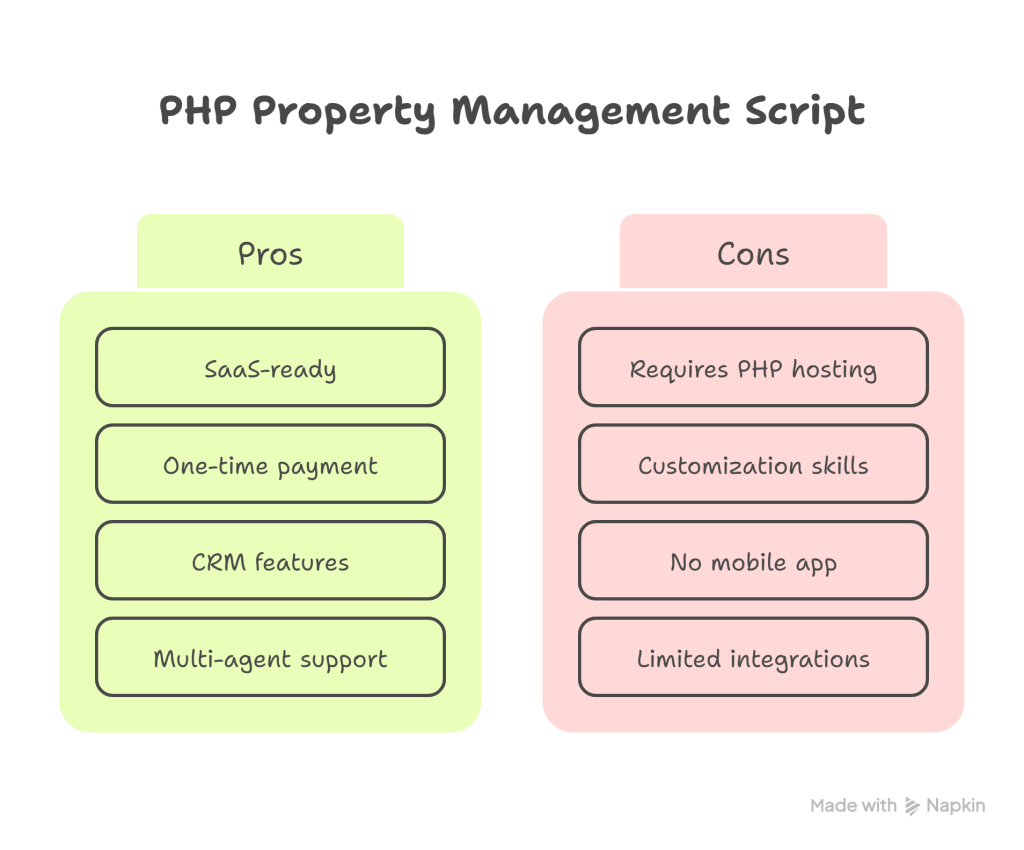Contents
Summary
e‑Real Estate Property Management is a SaaS-ready PHP script that helps agencies and real estate businesses manage property listings, leads, and agents in one dashboard. Perfect for anyone needing a self-hosted, affordable solution. 👉 Buy e‑Real Estate on CodeCanyon
What Is e‑Real Estate Property Management?
e‑Real Estate Property Management is a self-hosted PHP script for managing property listings, client leads, and agent activities. It centralizes real estate operations, making it easier to market properties, follow up on leads, and close sales.
Who it’s for:
-
Real estate agencies and brokers
-
SaaS founders building property tools
-
Freelancers creating real estate websites
-
Developers needing a backend for property portals
👉 View e‑Real Estate on CodeCanyon
Key Features of e‑Real Estate Property Management
-
Add and manage unlimited property listings
-
Built-in client & lead management CRM
-
Agent management with roles and permissions
-
Image gallery support for each property
-
Search and filter properties easily
-
Clean, responsive design

Pros and Cons
| Pros | Cons |
|---|---|
| SaaS-ready PHP script, fully self-hosted | Requires PHP hosting and initial setup |
| One-time payment, no recurring fees | Customization requires PHP skills |
| CRM features built-in for lead management | No native mobile app |
| Multi-agent support and clear dashboard | Limited out-of-the-box integrations |
Installation and Setup Guide
Installation steps:
-
Upload script files to your web host
-
Create a MySQL database
-
Access the installer in your browser
-
Configure settings, add agents, and start adding properties
Requirements:
-
PHP 7.4 or newer (PHP 8 recommended)
-
MySQL / MariaDB
-
Apache or Nginx with mod_rewrite enabled
Documentation:
👉 e‑Real Estate Documentation on CodeCanyon
Pricing and License Options
| License Type | Price* | Best For |
|---|---|---|
| Regular | $ — (check live) | Single agency or internal project |
| Extended | $ — (check live) | SaaS, multi‑agency, or commercial resale |
*Prices may change; check CodeCanyon for updates.
👉 Buy e‑Real Estate on CodeCanyon: Click here
Final Verdict – Is It Worth Buying?
e‑Real Estate Property Management is a solid, SaaS-ready PHP script for property listings, CRM, and agent management.
Strengths:
-
One-time payment, no SaaS fees
-
Combines listings and lead management
-
Built-in multi-agent support
Buy if: You run a real estate agency, want to build a listing portal, or launch a SaaS property tool.
Skip if: You only need a fully hosted SaaS or mobile app.
👉 Ready to modernize property management? Buy e‑Real Estate on CodeCanyon
FAQs
Q1: Does it include a CRM?
Yes, it has built-in client and lead management.
Q2: Is there a monthly fee?
No, it’s a one-time purchase.
Q3: Can multiple agents use it?
Yes, supports multi-agent and roles.
Q4: Can I customize it?
Yes, with PHP knowledge.
Q5: Is it mobile-friendly?
Yes, it has a responsive design.




2 thoughts on “e‑Real Estate Property Management Review: Best PHP Script for Property Listings & CRM”